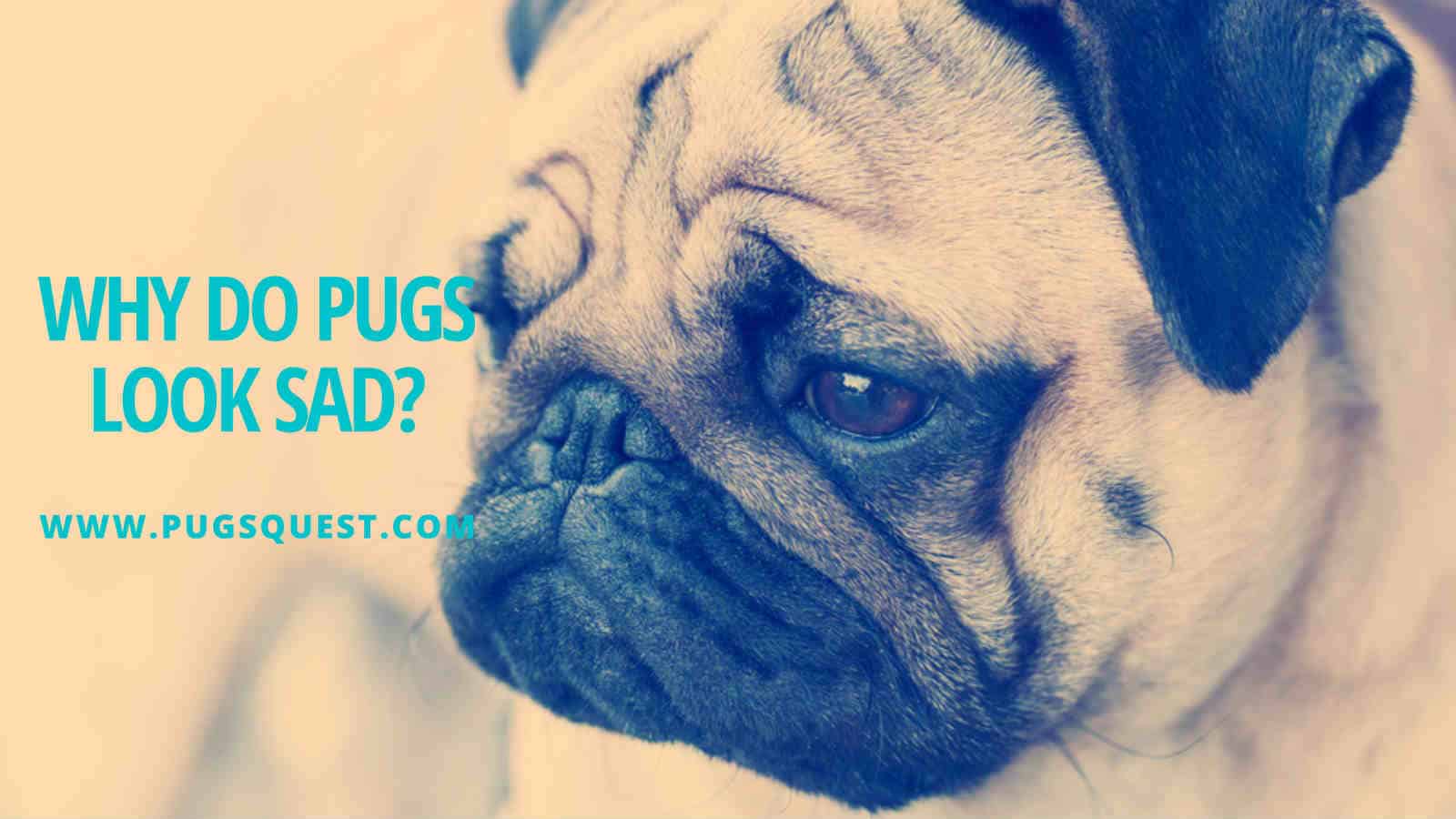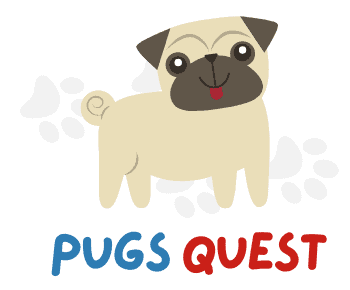
Oftentimes, your Pug isn’t sad – even if their facial features appear so – and this can be confusing and upsetting for owners. After all, we just want our friends to be happy.
In this article, we’ll be shedding light on the issue and identifying the real reasons your Pug might be a little down in the dumps.
Why Do Pugs Look Sad?
As brachycephalic dogs, Pugs have the archetypal flat face. It’s squishy, wrinkly, and (if you ask me) darned cute. But some people see a Pug’s natural face and interpret it as sad.
In reality, this is purely a matter of opinion. Pugs’ faces are formed this way genetically and their natural facial appearance is not, in fact, indicative of their emotional state.
As Pug owners, we must be careful not to interpret their facial features and expressions in the same way we would with our human friends and family.
Instead, it’s important to get in touch with our Pug’s own emotional signals and cues so we can better understand them.
Every Pug is unique and different. Some Pug owners say that their Pugs actually smile sometimes. At the end of the day, it’s important that we learn to tell when our pooches are happy and sad, irrespective of the bizarre facial expressions they knowingly or unknowingly whip out on occasion.
That said and done, what are some real signs that your Pug might be feeling sad?
Signs That Your Pug is Actually Feeling Sad
In general, Pugs have kind, docile, and jubilant characters. They’re known as little happy chappies who love playing and cuddling with their favorite human and dog friends. In fact, Pugs are almost always in a good mood.
But, like all animals, there might come a time when your pooch starts to feel a little bit down. Dogs are not immune from sadness or depression and there are many emotional, physical, and environmental factors that contribute to their wellbeing.
Common causes of canine depression include:
- A change in environment (e.g. when moving home temporarily or permanently)
- A change in the social group (e.g a new owner or new additions to the family)
- Boredom (if your Pug’s intellectual and emotional needs are not being met)
- Fear and anxiety (many Pugs are known to suffer from separation anxiety)
- Seasonal Affective Disorder (your Pug might feel sad during the wintertime)
- Illness or injury (your Pug could be in physical discomfort or pain)
- Grief (your Pugs human or dog friend has passed away)
Common signs of canine depression include:
- Lethargy – your Pug might start napping more than usual or seem more subdued.
- Loss of interest – your Pug might become withdrawn and lose enthusiasm for things that they typically enjoy (playing with their favorite toy, for example).
- Restlessness – your Pug might struggle to settle down or sleep.
- Moodiness – your Pug’s mood might change. Look out for behaviors that are not typical for your pet such as increased chewing or aggression.
- Appetite changes – your Pug might lose their appetite or change its eating patterns.
Top-tip: Sometimes sadness can be confused with stress. When a Pug feels stressed their eyes tend to bulge. You’ll notice that you can see much more of the whites of their eyes.
How Can I Cheer Up My Pug? What To Do If Your Pug is Sad
If you think that your Pug is suffering from canine depression, or that recent changes to your lifestyle could put your Pug at risk of increased feelings of sadness, then it’s time to give your pet some extra TLC. Don’t worry, your pooch can and will feel happy again soon.
Here are some actionable steps you can take to make your precious friend feel better.
1. Offer your Pug a special treat
Most Pugs are highly motivated by food, so take this as an opportunity to indulge them a little bit with a special homemade treat.
Why not try out a doggie recipe with your Pug’s favorite dog-friendly food?
2. Arrange a playdate
If your Pug hasn’t been socialized with other dogs in a while, they might be feeling a bit bored or lonely. And that could be contributing to their sadness.
If they have a doggie pal, try to arrange a playdate or two. Alternatively, it’s time to hit up your local dog park and make some new furry friends.
3. Take them for a walk
Exercise is mood-boosting for humans and canines alike. Make sure your Pug is getting between 20 and 30 minutes of exercise a day.
That could include their daily walk and some fun and games. A short walk in the morning and the same in the early evening is best.
4. Ride in the car
If your Pug is a car lover, take them out for a little road trip. This one won’t be for everyone.
If your Pug tends to get nervous or motion sick in the car this is to be avoided. But for those who love the wind in their hair, a car ride could be the perfect solution.
5. Offer some TLC
Pugs love cuddles. And when they’re feeling down they need even more TLC. It’s time to cozy up with your pooch and make them nice and comfy. Plus, a belly rub or two won’t hurt.
6. Be patient
When your Pug is feeling down, it’s really important to be patient. Their behavior might be a bit off from usual, but with some love and care, most Pugs will be back to their jolly selves soon.
If your Pug’s sadness is persistent, however, or you notice any lasting behavioral changes, it’s important to get them checked out by a veterinarian.
For more helpful tips check out this informative video:
Is My Pug Sad?
Pugs are well known for their wrinkly, squishy faces.
For some, the Pug’s expression is nothing but adorable. For others, it can appear a little sad.
It’s important not to use your Pug’s natural appearance as an indicator of their happiness.
Instead, it’s important to understand the real signs of Pug depression and nip it in the bud as soon as possible.
